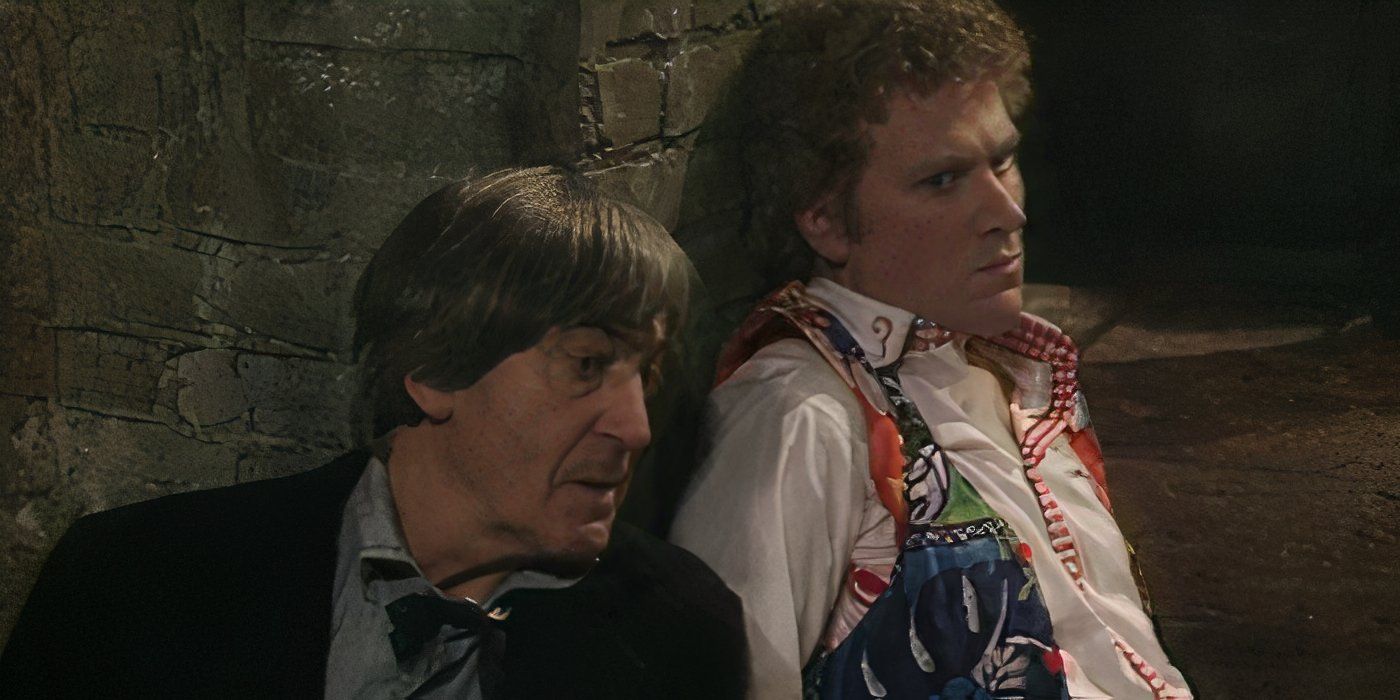Patrick Troughton’s Final Doctor Who Episode Was Exactly How Not To Do A Multi-Doctor Story

Doctor Who is well-known for its celebratory multi-Doctor stories, but 1985’s “The Two Doctors” shows just how not to do this kind of adventure. Most Doctor Who multi-Doctor stories come in anniversary years, a pattern set by 1973’s “The Three Doctors” and still followed by the 2005 relaunch. Russell T. Davies went even further with Doctor Who‘s 60th anniversary, literally bringing back David Tennant as the main Doctor.
1985’s “The Two Doctors,” which aired during Colin Baker’s tenure as the Sixth Doctor, is something of an anomaly. Producer John Nathan-Turner was keen to do another multi-Doctor story after the success of “The Five Doctors,” but writer Robert Holmes produced one of the strangest scripts he ever penned for the classic series. A location shoot in Seville, Spain, turned into such a catastrophe that Doctor Who wouldn’t film overseas again for decades. But, ultimately, the problems with “The Two Doctors” run far deeper – and they show how not to do a multi-Doctor story.
The Two Doctors Wasn’t Strong Enough To Be A Multi-Doctor Story (Or Patrick Troughton’s Final Episode)
The Two Doctors is an attack on nostalgia
At heart, a multi-Doctor story is an attempt to appeal to nostalgia – to remind viewers of past Doctors, to celebrate the show’s history and heritage. “The Two Doctors,” though, stands opposed to nostalgia in quite a dramatic way. It presents the Doctor as cruel and harsh – and not just Colin Baker’s controversial Sixth Doctor, but also Patrick Troughton’s Second, who feels almost unlikable. The plot is a not-so-subtle rebuttal of the very idea of monsters, with experiments portrayed on an alien race known the Androgums that the Doctor objects to in a way that seems quite racist.
“You give a monkey control of its environment, it’ll fill the world with bananas,” he snaps. “Dastari, I have no doubt you could augment an earwig to the point where it understood nuclear physics, but it’d still be a very stupid thing to do!” These are monsters, and they should stay in their place – a shocking argument from Doctor Who, only that feels almost like a criticism of the show’s history and heritage rather than a celebration of it. There’s something quite unsettling about “The Two Doctors” on a thematic level, and it’s not entirely clear whether that was entirely intentional.
The Doctor is himself transformed into a monster at one point, but neither the Second nor the Sixth seem to learn anything from the experience.
Making matters worse, though, none of this is explicitly interrogated in the script. The Doctor is himself transformed into a monster at one point, but neither the Second nor the Sixth seem to learn anything from the experience. Modern viewers may criticize “Twice Upon A Time” for the cringeworthy Doctor Who scenes that portrayed the First Doctor as sexist, but “The Two Doctors” was far worse, and didn’t even seem to hint the Doctor had outgrown past prejudices. It really is tragic that this became Patrick Troughton’s final appearance in the show, with the actor sadly passing away in 1987.
The Worst Part Is The Second & Sixth Doctors Hardly Interact

Even stranger, though, is the fact the Second and Sixth Doctors hardly interact. The best multi-Doctor stories explore the relationships between different characters, positioning Doctors against one another, or else showing how one Doctor would treat the companion of another; think “The Five Doctors” or “The Day of the Doctor.” “The Two Doctors,” in contrast, barely shows any interaction at all. It’s utterly underwhelming – and it’s hard to avoid feeling that was the whole point.
To be fair, the script had been rewritten several times, in large part because the location filming had moved from one part of the world to another; this was originally set in the United States, with Holmes’ script full of jokes on the difference between American and British English. The move to Spain necessitated a rewrite, and it feels as though the joy was sucked out of the story along with the one-liners. It’s intriguing to imagine what “The Two Doctors” would have looked like if it had been shot in the U.S., playing to the original concept.
The Two Doctors Shows The Danger Of Relying On The Multi-Doctor Story Format


.jpg)
All in all, then, “The Two Doctors” demonstrates the great danger of the multi-Doctor format; it’s a story with only Patrick Troughton’s return to draw viewers in, and little to nothing else. The plot is threadbare, the ideas are ill-formed, and even familiar characters feel unlikable. All these years later, “The Two Doctors” is mostly remembered for its violence, Australasian Doctor Who Fan Club president Tony Howe famously criticizing one scene for its “sick, shock violence… [for] cheap shock value only.”
Robert Holmes was one of Doctor Who‘s greatest writers, but this was sadly not his finest hour. It’s just such a shame that this disappointment stands as the last Patrick Troughton story, making it such an important part of the franchise’s history. It is to be hoped that Nathan-Turner and Holmes’ successors have all learned from this misstep.









